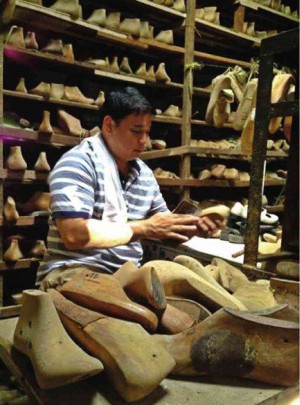This Saturday night, the Cinemalaya Philippine Independent Film Festival celebrates a decade of independence, even as funding, marketing and distribution remain thorny issues.
Cinemalaya will unveil its 10th edition with flourish and festivity at the Cultural Center of the Philippines, with Jose Antonio Vargas’ documentary “Documented” as opening salvo; screenings of the competition and exhibition films start tomorrow and run until Aug. 10 at the CCP and select Ayala cinemas in Metro Manila.
In an exclusive interview with the Inquirer, Chris Millado, CCP vice president/artistic director and Cinemalaya festival director, outlined activities conceptualized to make Cinemalaya’s first-decade anniversary a momentous occasion. These include the launch of the book, “Making Waves: 10 Years of Cinemalaya” (edited by Clodualdo del Mundo Jr.), to the unveiling of a new logo/opening billboard (designed by filmmaker Ellen Ramos).
Decade of shake-ups
Cinemalaya has gone through shake-ups, at once tumultuous and transformative, in the past 10 years.
The biggest news early this year was the reported departure of the festival’s main benefactor, Antonio “Tonyboy” Cojuangco Jr. Millado clarified, “He is still with us, but he has modified his relationship with Cinemalaya. He has redirected his financial support to the development of the foundation, to make it sustainable in the long term.”
With Cojuangco’s “modified” support, the fest organizers knocked on government’s door for much-needed finances.
Millado reported, “We were fortunate to receive an additional appropriation of P15 million, for this year, from the Department of Budget and Management.”
Cinemalaya Foundation president Nes Jardin drafted the proposal approved by the government. “Next year, we have to look for funding again. I hope government support will be sustained,” Millado said.
He acknowledged the huge strides that the event has made, but recognized the enormity of the challenges that loom ahead. The toughest hurdle is sustaining public interest after the 10-day festival. “You can feel the energy and the excitement of the students and other viewers who flock to the CCP.” But after the fest, he said, the enthusiasm dissipates.
FESTIVAL organizers—led by Chris Millado (left, front row), Laurice Guillen, Nes Jardin and Mel Chionglo (fourth, fifth and sixth from left, front row) and Tess Rances (right, front row)—with this year’s batch of filmmaker-participants during the launch at CCP of this year’s event. Rodel Rotoni
Hardly encouraging
When the festival’s films are shown in commercial theaters post-Cinemalaya, the box-office results are hardly encouraging, Millado admitted.
The long-term goal is to connect with a broader mass audience, beyond the core fan base of young people and cineastes, he said. “After the festival, a Cinemalaya film should still have a life.”
The most crucial battlefields are still marketing, promotion and distribution, he explained. “We need to work with mainstream marketing experts. We need to communicate to the general public what Cinemalaya is all about.”
Millado stressed that, apart from the quality of its products, the main edge of Cinemalaya is that it provides a venue for film buffs to discuss and debate among themselves, and also to interact with filmmakers after the screenings.
This year, as in previous years, Millado intends to engage in a favorite ritual: From the third floor of the CCP, he will observe the hubbub of activity at the Main Theater lobby. “You can see filmmakers surrounded by students… the germination of ideas begin there. You can see the next generation of filmmakers, the future of Philippine cinema,” he said.
Bridge the gap
Millado is appealing to “mass marketing experts” to help Cinemalaya bridge the gap between its films and the general audience.
His call becomes all the more imperative, now that there is talk of simultaneous screenings in other cities like Cebu and Davao in the near future.
Meanwhile, the Cinemalaya brand has reached cable TV audiences—past films are now aired on Fox Filipino.
“This year, we are looking into other distribution systems, like video on demand,” Millado said. “We are starting with Cinemalaya short films. We are partnering with Viddsee, a distribution network based in Singapore that specializes in Asian short films.”
(E-mail bayanisandiegojr@gmail.com)



